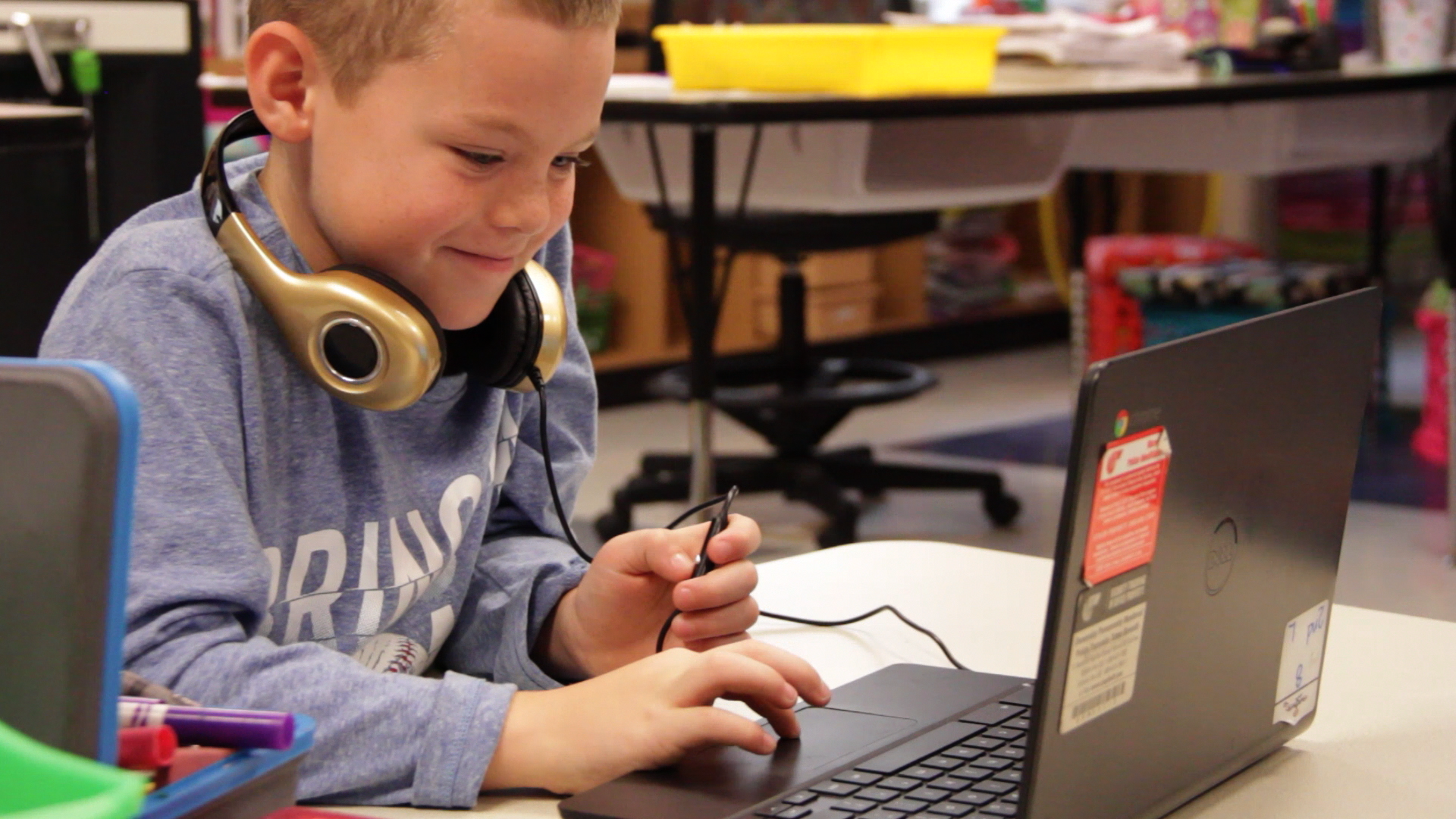
The education system is undergoing a huge shift in daily structures and processes as a result of the pandemic. Students and educators have been affected by the huge changes to daily life, including distancing from friends and wider support groups, and family members losing jobs or income. Given these disruptions, it’s tempting for schools to narrow their focus on core content learning (language arts and mathematics) to make up for lost learning time in the spring of 2020.
But could such a narrow focus prove detrimental? Could we be missing an opportunity where emphasizing social emotional learning in the classroom could actually benefit students even more than pre-pandemic research suggests?
In the short version, social emotional learning (SEL) is the development of skills that support the whole learner: mental wellbeing, a growth mindset, healthy relationship building, and responsible decision making. The definition has changed over time and by different organizations—one of the most referenced definitions is this one from the Collaborative for Academic, Social, and Emotional Learning (CASEL).
So, what have researchers discovered about social emotional learning in the classroom? What are some of the key research findings you can use to support your students and teachers right now?
First, we need to look at how social emotional learning is recognized and measured. CASEL identifies 5 Key Competencies in SEL:
Many of the skills weaved in above are becoming increasingly important to employers, especially those hiring in the STEM fields. Now that content knowledge, such as computing a formula or remembering historical dates, is easily accessible through online tools, the demand for skills needed by employees shift to collaboration, iteration, critical thinking, and persevering through challenging and novel problems--all skills listed above or adjacent to skills listed above.
One thing that surprised me during my investigation of SEL is that the research is very consistent. Listed below are five key findings that could be useful to keep in mind as we continue to adapt to these new structures in education and daily life.
An examination of the CASEL model as a means to measure the development of SEL skills suggests that development in one area of competency improves other areas of development, though it’s unclear whether that is because there are then more opportunities to develop the other skills or if they share source skills - or both (Ross & Tolan, 2018). For example, teaching students how to respect social nuances forms empathy and understanding, enabling better relationship building when working with diverse groups of people.
Incorporating SEL into class instruction improves not only social and emotional skills but also academic achievement. A meta-analysis of schools implementing comprehensive SEL programs (with the SAFE instructional framework) found an 11-percentile gain in academic performance (Durlak, et al., 2011). Another meta-analysis found between an 11 up to 17 percentile gain (Patyon et al., 2008). Researchers attribute their findings to the secondary effects of SEL programs, such as higher academic self-esteem and a more positive attitude towards school itself.
![]()
SEL is most effective when taught by an instructor the student knows or their own teacher.
A meta analysis focused on school-wide implementations suggests that these interventions can be incorporated into routine educational practices and do not require outside personnel for their effective delivery (Durlak, et al., 2011). This suggests that the trust students have with adults they know could be a component of effective SEL implementation, but more research is needed to establish this theory.
![]()
Teachers’ own social-emotional wellbeing strongly influences their students. Teachers who experience higher stress are less effective at implementing effective SEL (Schonert-Reichl, 2017).
In addition, an extensive report from the RAND Corporation and The Wallace Foundation found that “many interviewees viewed the development of adults’ abilities to establish and maintain their own healthy relationships as the fundamental precursor to those adults effectively teaching their students how to do the same.”
![]()
Much of the current research focuses on school-wide SEL programs (any curriculum). One meta analysis suggests that the implementation challenges of non-school-wide programs lead them to not be as effective (Durlak et al.). While SEL was initially conceived as an intervention or mental wellness program, another meta analysis suggests that SEL programs are also effective for students without presenting problems (Payton et al., 2008).
In addition to the research findings listed below, teachers implementing SEL generally understand, value, and endorse social and emotional learning for all students, but 81% rank time as the biggest challenge to implementing SEL (Bridgeland, et al., 2012). How can we apply these findings to our current shifts in the structure of our daily lives and education system?
![]()
Like other areas in pedagogy, theoretically, best practices will remain the same whether teachers and students are in person or distance learning. While there isn’t any definitive research on SEL in virtual classrooms, several editorial pieces and resource lists suggest how to translate SEL best practices into a virtual setting. Notably, the California Department of Education starts their resource list with self care for educators, emphasizing the importance of research point #4 above.
An element Dr. Clio Stearns asks educators to keep in mind when implementing SEL in the classroom right now is not to feign a cheery outlook when students are experiencing many difficult moments. “Instead of encouraging belly breathing and then hurrying into a lesson, what if we weave in chances to share our stories and listen to those of our students?” she posits. This supports research point #4 as well as #3; by sharing their own stories, teachers can model change management and build trust with their students.
Instead of encouraging belly breathing and then hurrying into a lesson, what if we weave in chances to share our stories and listen to those of our students?
For education leaders, a bigger challenge in implementing SEL in distance learning may be embedding this approach school-wide and building a consistent school culture. It will take careful vetting of programs and/or professional learning at a time when there are a multitude of other needs also rising to the forefront (internet access, device access and management, communication, and not to mention, core subjects).
![]()
Much of the current research around SEL is focused on programs that explicitly teach those skills. More recent articles suggest integrating academic and social emotional learning.
This is one interesting benefit emerging from our ST Math program; perhaps because the program was developed with a focus on tapping into how our brains learn. ST Math uses the principles of neuroscience and game design to create a learning experience that supports all learners.
ST Math helps to redefine how students see themselves in relation to their ability to do math. While building academic success, at the same time, ST Math also increases students' confidence, understanding, and motivation. A recent JRTE study found students who play ST Math have higher mathematics self-beliefs than non-ST Math students (Rutherford, 2019).
Students who believe they can accomplish a task are more likely to invest time and effort in working toward this accomplishment, even in the face of difficulty.
More research is needed on content-focused programs that have embedded SEL skill development. However, the need here is huge as educators attempt to make the most out of the limited time they have with students (for many, school days have gotten shorter). Programs that can provide multiple areas of benefit and increased time on task (learning) should be in high demand indeed.

As learning experiences change over these next few years, with more parent involvement and a forced shift to distance and hybrid learning, it will be interesting to see how SEL implementation changes and what the next series of studies and meta-analyses will show. In the meantime, I look forward to enabling more and more students across the country to see themselves as competent mathematicians and problem solvers through ST Math and our other programs here at MIND Research Institute.
Bridgeland, J, Bruice, M., & Hariharan, (2012). The Missing Piece: A National Teacher Survey on How Social and Emotional Learning can Empower Children and Transform Schools. Civic Enterprises with Hart Research Associates.
Durlak, J. A., Weissberg, R. P., Dymnicki, A. B., Taylor, R. D. & Schellinger, K. B. (2011). The impact of enhancing students’ social and emotional learning: A meta-analysis of school-based universal interventions. Child Development, 82(1): 405–432
Payton, J., Weissberg, R. P., Durlak, J. A., Dymnicki, A. B., Taylor, R. D., Schellinger, K. B., & Pachan, M. (2008). The Positive Impact of Social and Emotional Learning for Kindergarten to Eighth-Grade Students: Findings from Three Scientific Reviews. Technical Report. Collaborative for Academic, Social, and Emotional Learning (NJ1).
Ross, K., & Tolan, P. (2018). Social and Emotional Learning in Adolescence: Testing the CASEL Model in a Normative Sample. The Journal of Early Adolescence, 38(8), 1170–1199.
Schonert-Reichl, Kimberly A. “Social and Emotional Learning and Teachers.” The Future of Children, vol. 27, no. 1, 2017, pp. 137–155.
Teomara Rutherford, Allison S. Liu, Arena S. Lam & Katerina Schenke (2019): Impact on mathematics self-beliefs from a mastery-based mathematics software, Journal of Research on Technology in Education.

Calli Wright was the Marketing Manager at MIND Research Institute. She loves playing and designing board games, which she often talks about on twitter @CalliWrights.
Comment